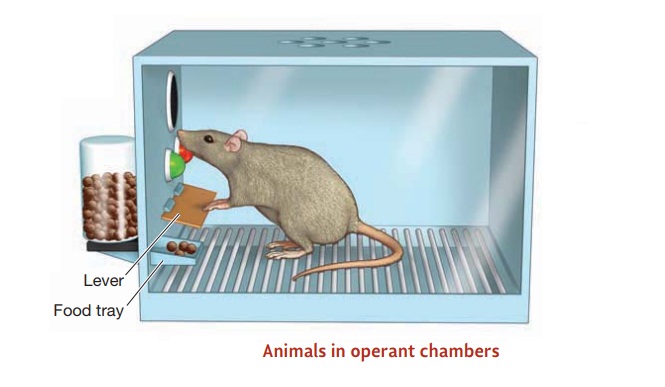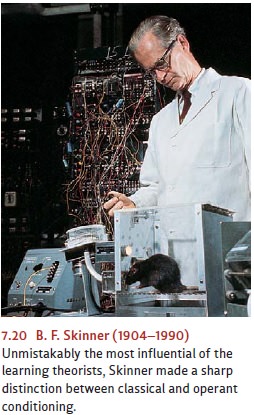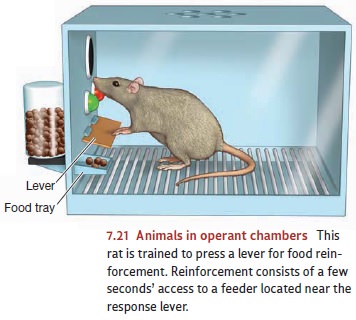Chapter: Psychology: Learning
Instrumental Conditioning: Skinner and Operant Behavior

Skinner and Operant Behavior
Thorndike initiated the
experimental study of instrumental behavior; but, unquestion-ably, the
psychologist who shaped the way most modern learning theorists think about the
subject was B. F. Skinner (1904–1990; Figure 7.20). Skinner was one of the
first theorists to insist on a sharp distinction between classical and
instrumental condition-ing. He noted that in classical conditioning, the
animal’s behavior is elicited by the US. Salivation, for example, is set off by
an event outside the organism. But in instrumen-tal conditioning, Skinner
argued, the organism is much less at the mercy of external factors. Its
reactions are emitted from within, as if they were what we ordinarily call
“voluntary.” Skinner called these instrumental responses operants:They operate on the environment to bring about some change
that leads to some consequence. And, in Skinner’s view, these consequences are
crucial. Like Thorndike, Skinner argued that an operant followed by a positive
consequence was more likely to be emitted in the future, while an operant
followed by a negative consequence was less likely to be emitted again
(Skinner, 1938).

Skinner believed, however, that
Thorndike’s procedure for studying learning was inefficient. Rather than
placing animals in a puzzle box (which required many minutes for each learning
trial), Skinner sought a procedure in which the instrumental response could be
performed repeatedly and rapidly, so that data could be gathered more easily.
Many of his studies therefore employed an experimental chamber (popularly
called the Skinner box) in which a rat presses a lever or a pigeon pecks at a
lighted key in order to gain a reward (Figure 7.21). In these situations, the
animal stays in the chamber for a set interval—perhaps an hour at a time—and
during that interval, we track the animal’s behavior by recording its response rate—the number of lever
presses or key pecks per unit of time.

Related Topics